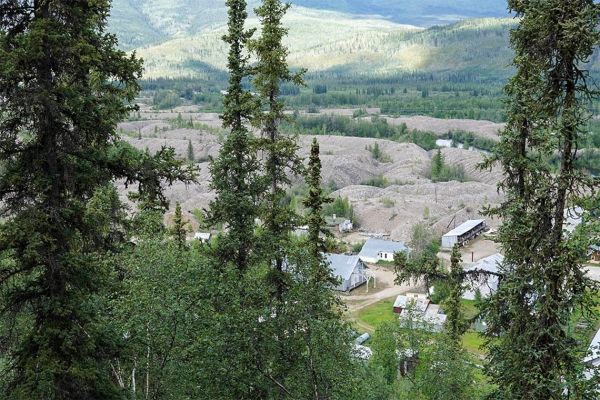By examining clues hidden beneath tree bark, a research team from the University of Toronto Mississauga is recording the history of pollution in Canada’s North.
Paleoclimatologist Trevor Porter (pictured), an assistant professor of geography, geomatics and the environment who uses tree rings to understand past climate, recently teamed up with Igor Lehnherr, a fellow assistant professor who studies contaminants, and master’s student Sydney Clackett to investigate annual pollution levels at an old gold mining site in the Yukon. They were particularly interested in the “heavily polluted” Bear Creek area, a busy gold mining town that operated from 1905 to 1966 just outside Dawson City, Yukon.
One of the methods used to extract gold from river gravel was to add mercury, which binds to the gold to help separate it from the sediment. The deposits were then heated to separate the gold and mercury. The process of burning off the mercury meant some of it was diffused into the atmosphere, where trees would “breath it in” during their growing season, according to Porter.
“Especially in the north, trees are growing in this really temperature-limited environment so we can look at the rings and almost interpret it like a climate record, going back in time,” he says.
Continue reading at University of Toronto.
Image via Trevor Porter.


